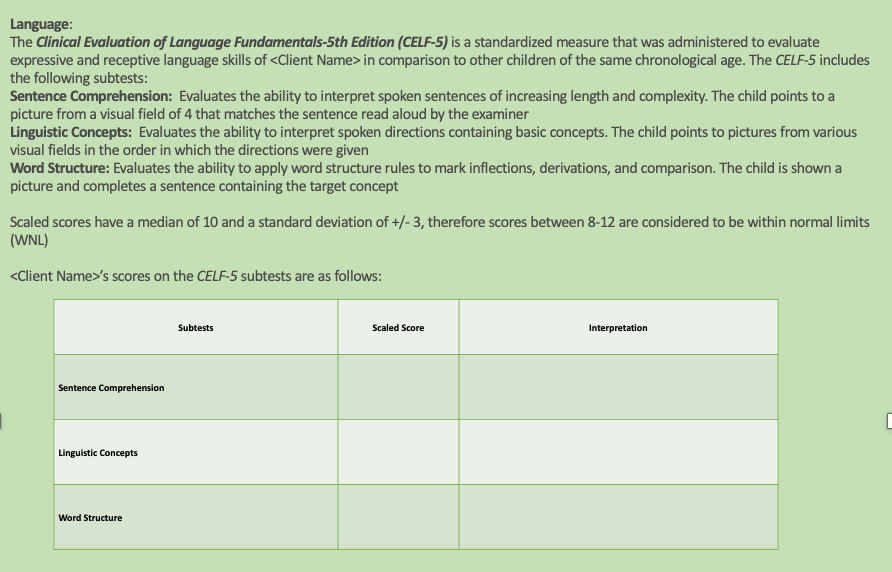Write a Great Speech and Language Report
Write a Great Speech and Language Report
So you want to write a great speech and language report? You need to start with a great (i.e., thorough) template. This will save you time while writing the report and provide you with consistency to ensure all of the important elements are included. You know, the ones that can show caregivers, administrators, and insurance companies that you know your stuff!
What are the important elements in a speech and language report?
Section 1. Client information:
Since reports are legal documents that can be audited or requested in a court of law and will be read by caregivers and other disciplines, it’s important to include identifying information so that readers know exactly who the client is. This includes information such as the client’s:
Full name
Preferred pronouns
Date of birth and chronological age
Date of evaluation and date report was written
In some settings, you might add the date that consent was given for the evaluation or the date of referral
Name of setting or school
Reason for referral
Section 2. Background information:
In some settings, you may not be able to gather all of the client’s background information. If you are able to gather any information, it’s important to include it so that readers have a full picture of the client’s development, milestones, abilities, educational or occupational background, weaknesses, and family history.
Section 3. Evaluations and Results:
Here is where you list all of the standardized measures given; the ones completed and any assessments that may have been started but were not able to be completed for any reason (i.e., time constraints, client behavior, etc). It’s a good idea to give at least one language and one speech measure for all evaluations. Depending on the reason for referral and client concerns, additional standardized assessments may be given.
After listing the assessments, include a description of each assessment in reader-friendly terms, client results, and interpretations. Remember that the report may be shared with many people with different backgrounds including caregivers, other disciplines, teachers, other SLPs, administrators, insurance companies, etc. Reports should be written in a way that anyone, no matter their background or profession, can understand the information. Here are a few things to remember:
- It’s ok to use terminology specific to Speech-Language Pathology as long as it is also defined in the report.
- Make sure to spell out any acronyms before using them throughout the report.
For example:

- For assessments that have subtests, include the title and short description of the subtest.
- To display the results, include a table with the subtest name, client score, and interpretation
For example:

To save yourself time, it’s worth investing in evaluation report templates that you can use over and over again by pasting them into the report template and filling in the client information. You won’t be sorry!
View my report templates HERE.
Section 4. Clinical Observations:
Here is where you describe all informal observations made during the evaluation. For young children, observations may be play-based. For older children, observations may be conversation-based. Describe the client’s: voice and fluency, language use and comprehension, social language, and behavior.
Section 5. Summary:
Here is where you summarize the formal and informal evaluation results and restate the interpretations of your findings. If the client will be referred for services, remember to add an impact statement on the client’s natural environment in order to justify services. An example of an impact statement is: “The client’s language disorder negatively impacts his ability to communicate his thoughts and ideas in the classroom with teachers and peers”.
Section 6. Recommendations:
Specifically state recommendations for services (or no services), frequency and length of sessions, and long and short-term goals.
Section 7. Home and School Recommendations:
Go the extra mile and include a few recommendations for home and school that teachers and caregivers can implement immediately following the evaluation. This helps them feel empowered in helping the client make progress right from the start.
Happy report writing 🙂 For information on completing an oral periph exam, check out my blog.

12 Comments